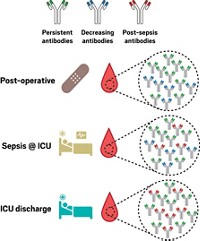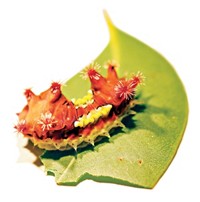Advertisement
Grab your lab coat. Let's get started
Welcome!
Welcome!
Create an account below to get 6 C&EN articles per month, receive newsletters and more - all free.
It seems this is your first time logging in online. Please enter the following information to continue.
As an ACS member you automatically get access to this site. All we need is few more details to create your reading experience.
Not you? Sign in with a different account.
Not you? Sign in with a different account.
ERROR 1
ERROR 1
ERROR 2
ERROR 2
ERROR 2
ERROR 2
ERROR 2
Password and Confirm password must match.
If you have an ACS member number, please enter it here so we can link this account to your membership. (optional)
ERROR 2
ACS values your privacy. By submitting your information, you are gaining access to C&EN and subscribing to our weekly newsletter. We use the information you provide to make your reading experience better, and we will never sell your data to third party members.
Analytical Chemistry
Alligators To The Rescue
Reptile's blood may provide new source of antimicrobials
by Celia Henry Arnaud
April 7, 2008

Alligators may be dangerous out on the bayou, but their blood could provide a new source of antimicrobial compounds. Researchers at Louisiana State University and at McNeese State University, in Lake Charles, La., are analyzing alligator blood to identify peptides and proteins with antimicrobial activity. On April 6, they presented preliminary results at the American Chemical Society meeting in New Orleans in a poster session sponsored by the Division of Analytical Chemistry.
In previous studies, biochemist Mark E. Merchant of McNeese State found that extracts from alligator blood kill a variety of bacteria and yeast, including "some incredibly nasty strains of antibiotic-resistant bacteria" such as methicillin-resistant Staphylococcus aureus, the notorious culprit in many hospital-acquired infections. These blood samples contain peptides that are part of the alligator???s innate immune system.
Merchant has teamed up with mass spectrometrist Kermit K. Murray and grad student Lancia N. F. Darville at Louisiana State to perform proteomic analyses of alligator serum and white blood cells to identify those peptides. "Mark was convinced there would be just a few peptides in each of the samples," Murray said. "We did some one-dimensional separations and found there was quite a bit of stuff in there.???
The instrumental part of the proteomic analysis is fairly straightforward, Murray said, but the identification part is not. "One of the problems with the alligator proteome is that there are very few proteins in the databases," he said. "We have to feel around a bit in the early going to see what we have in the samples and to try to sequence the peptides."
Studies of antimicrobial peptides in other species give them clues of what to expect, according to Darville. "There is literature out there as to what these kinds of peptides should look like. They're arginine- and lysine-rich," she said. "We're expecting that alligator antimicrobial peptides should be very similar in terms of sequence to those that are already in the literature."
To identify the peptides and proteins that are responsible for the antimicrobial activity, the team is analyzing blood taken from alligators before and after their immune systems are challenged. Merchant collects blood from an alligator, injects that alligator with bacterial lipopolysaccharide to simulate an infection, and then takes another blood sample 24 hours later. Such differential analysis could lead to a better understanding of alligators' immune systems and to specific candidates for antimicrobials. "I will isolate and characterize each peptide on an individual basis at first and then investigate the possibility of synergistic activity," Merchant says.





Join the conversation
Contact the reporter
Submit a Letter to the Editor for publication
Engage with us on Twitter